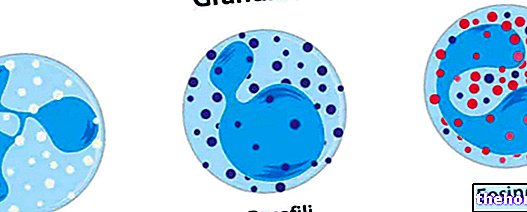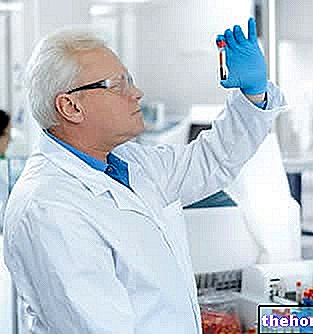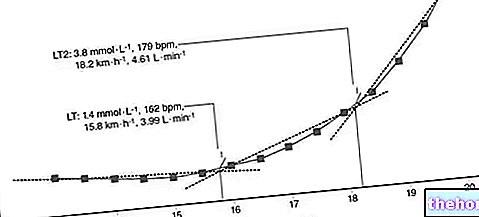What is Sickle Cell Anemia?
Sickle cell anemia is a genetic disease of the blood, so defined for the characteristic sickle shape assumed, in particular circumstances, by the red blood cells of the patient. This peculiarity is in contrast with the typical shape - a biconcave, elastic and easily deformable disc - of mature erythrocytes, which allows them to pass undisturbed in the narrow lumen of the blood capillaries.

Not surprisingly, the average life of half-moon erythrocytes is 10-20 days, compared to 4 months for normal red blood cells. The consequences of sickle cell anemia are therefore linked to the increase in blood viscosity, the reduction of the amount of oxygen available to the tissues and the appearance of vaso-occlusive phenomena.
As anticipated, the sickling of red blood cells occurs mainly in certain precipitating situations, including hypoxia, decreased blood pH, severe infections, increased temperature and the presence of 2,3 bisphosphoglyceric acid. These conditions are typical of the venous portion of the capillaries and increase, for example, during strenuous physical exercise and when staying in the high mountains.
Index Insights
Causes of Sickle Cell Anemia Symptoms and Complications Treatment and Therapy Drugs for the Treatment of Sickle Cell AnemiaCauses
Sickle cell anemia is caused by a mutation in the gene that directs the synthesis of hemoglobin, a large protein that captures oxygen from the lungs and carries it to various tissues. Allocated within the red blood cells, hemoglobin also collects part of the carbon dioxide and transports it to the lungs, where it is eliminated.
In the adult, each hemoglobin molecule has - in its quaternary structure - four subunits, of which two alpha chains, identical, of 141 amino acids, and two beta chains, identical, of 146 amino acids.
In sickle cell anemia, the mutation affects a single nucleotide base of the gene that codes for the Beta subunit. This mutation (an adenine replaces a thymine) causes the replacement of one amino acid (glutamic acid) with another (valine).
The result is an anomalous form of hemoglobin - called hemoglobin S (from sickle, meaning sickle) - with different structure and physico-chemical characteristics. In the presence of a low oxygen tension, hemoglobin S polymerizes; consequently the erythrocytes elongate and curve, assuming the characteristic sickle shape.
As anticipated, sickle cell anemia is a hereditary disease and as such it is not contagious, much less secondary to infectious diseases or dietary deficiencies. On the contrary, it is present from birth. From a genetic point of view, it is a disease autosomal recessive; this means that patients with sickle cell anemia are homozygous for the mutation. Heterozygous individuals, that is, who receive a mutated gene from one parent and its healthy allele from the other, are instead asymptomatic (if not exposed to severe deficiencies of oxygen, have no hemolysis, anemia, painful crises or thrombotic complications). Even in the absence of anemia, sickle cell trait (sickle cell) can be demonstrated in vitro in heterozygotes; in these individuals only one percent of the circulating red blood cells has an abnormal shape, while in homozygotes this percentage rises up to 50%.
Risk of Passing the Disease to Children
Sickle cell anemia is particularly widespread in some areas of the globe, in particular in the Mediterranean regions (especially in Africa) and more generally in those where malaria is still present or was in the past. Depranocytosis, in fact, has a protective effect against this mosquito-borne disease. Approximately 0.2-0.3% of American blacks are homozygous for the disease, while heterozygotes represent 8-13% of the black population.

To help these couples, particular methods of in vitro fertilization have been developed, through which the eggs taken from the mother are fertilized with the spermatozoa of the father. The zygotes are then subjected to a test to detect the presence of the abnormal gene; in this way only the fertilized eggs without the mutation are transferred to the mother's uterus, for implantation and the normal continuation of the pregnancy. However, this intervention has its limits, represented by the "high cost and the" absence of certainty about the positive outcome.
Healthy carriers of the mutated gene for sickle cell anemia are easily identified with a simple blood test; it is also possible to carry out an antenatal diagnosis. In couples where at least one partner belongs to a family at risk, an interview with a geneticist counselor it is essential to evaluate the possibilities of giving birth to children with the disease.
From the relationship between an individual who is heterozygous for the gene responsible for sickle cell anemia and another perfectly healthy from this point of view, children can be born with healthy carriers or with absolutely normal hemoglobin; the probability, for both cases, is 50% at each pregnancy .
Other articles on "Sickle Cell Anemia"
- Sickle Cell Anemia - Symptoms and Treatment
- Sickle Cell Anemia - Drugs for the treatment of Sickle Cell Anemia




























